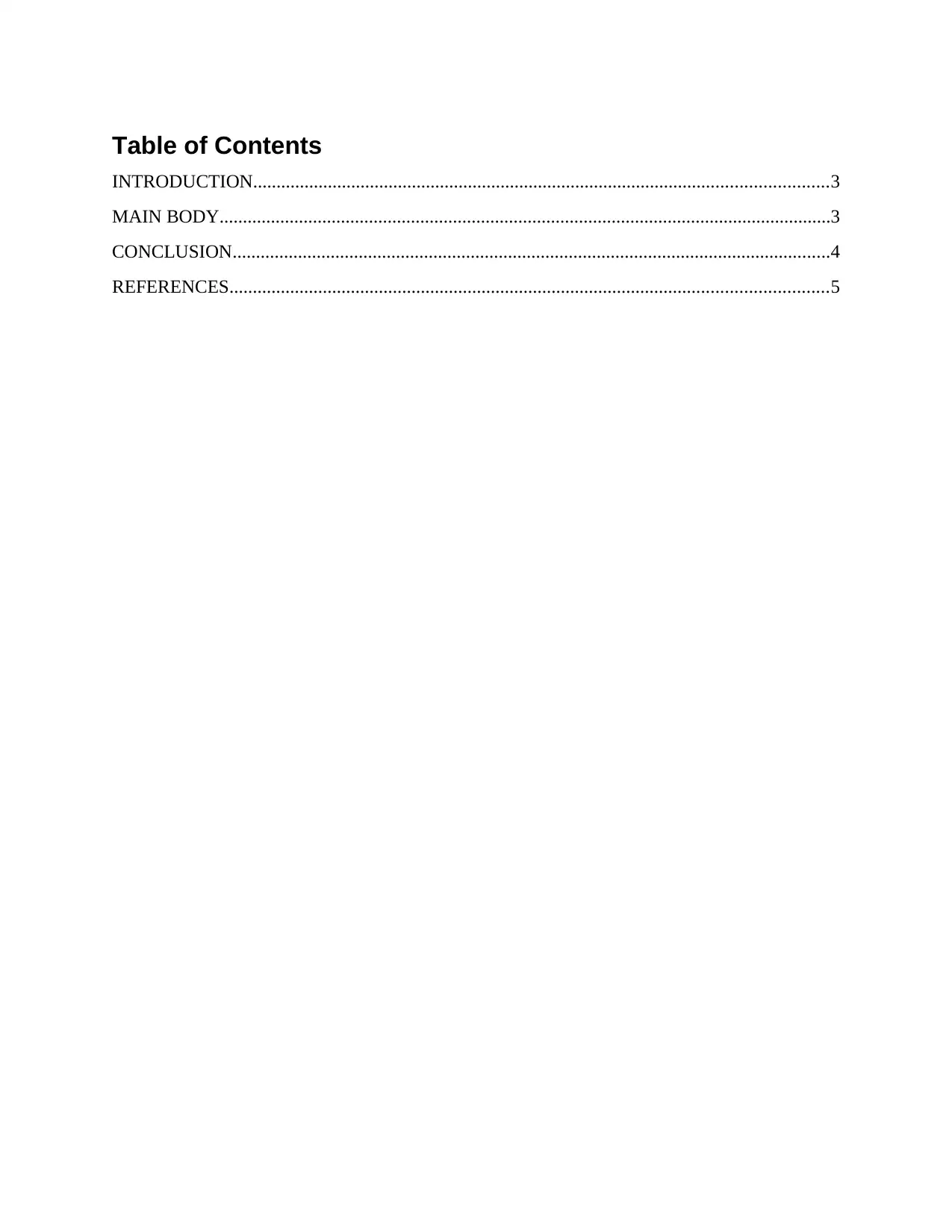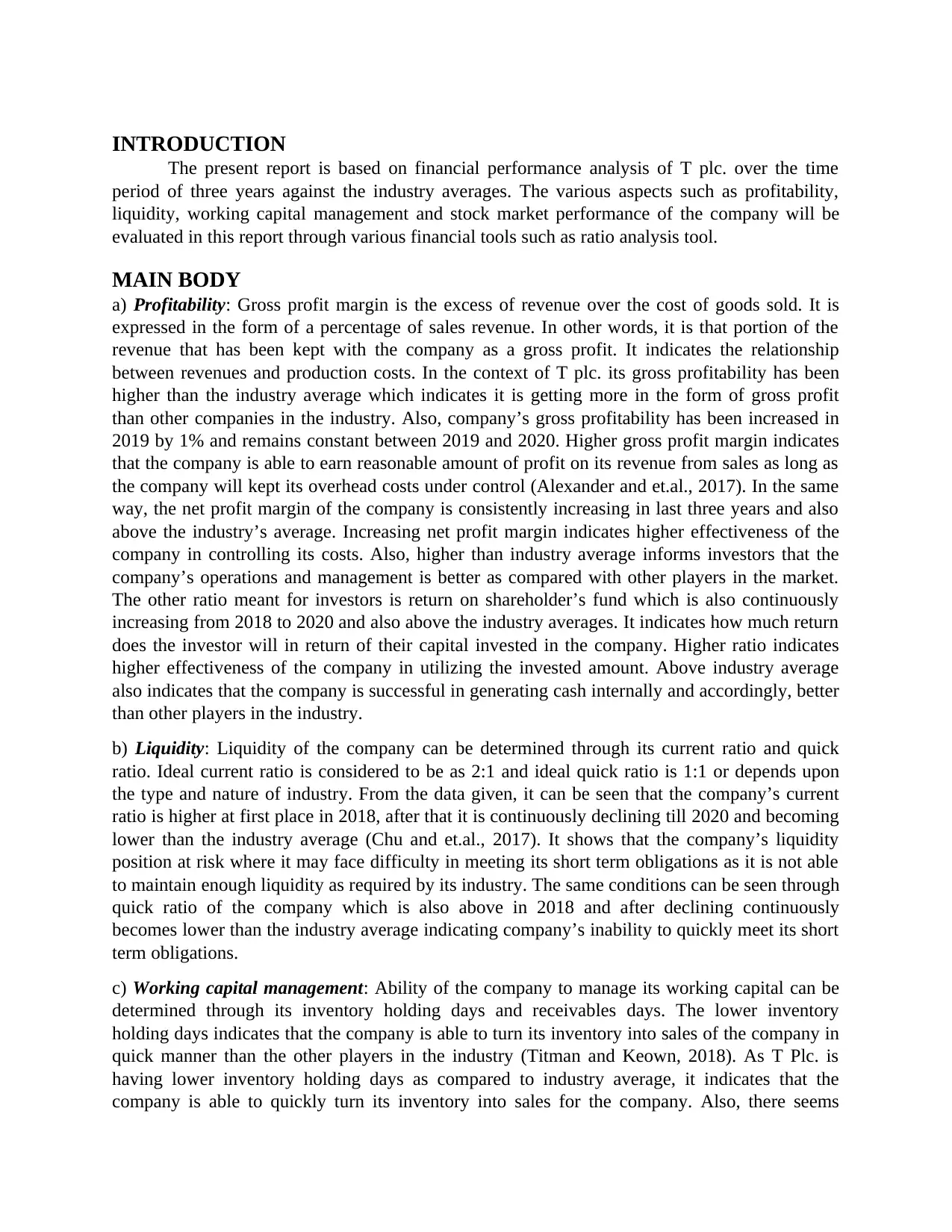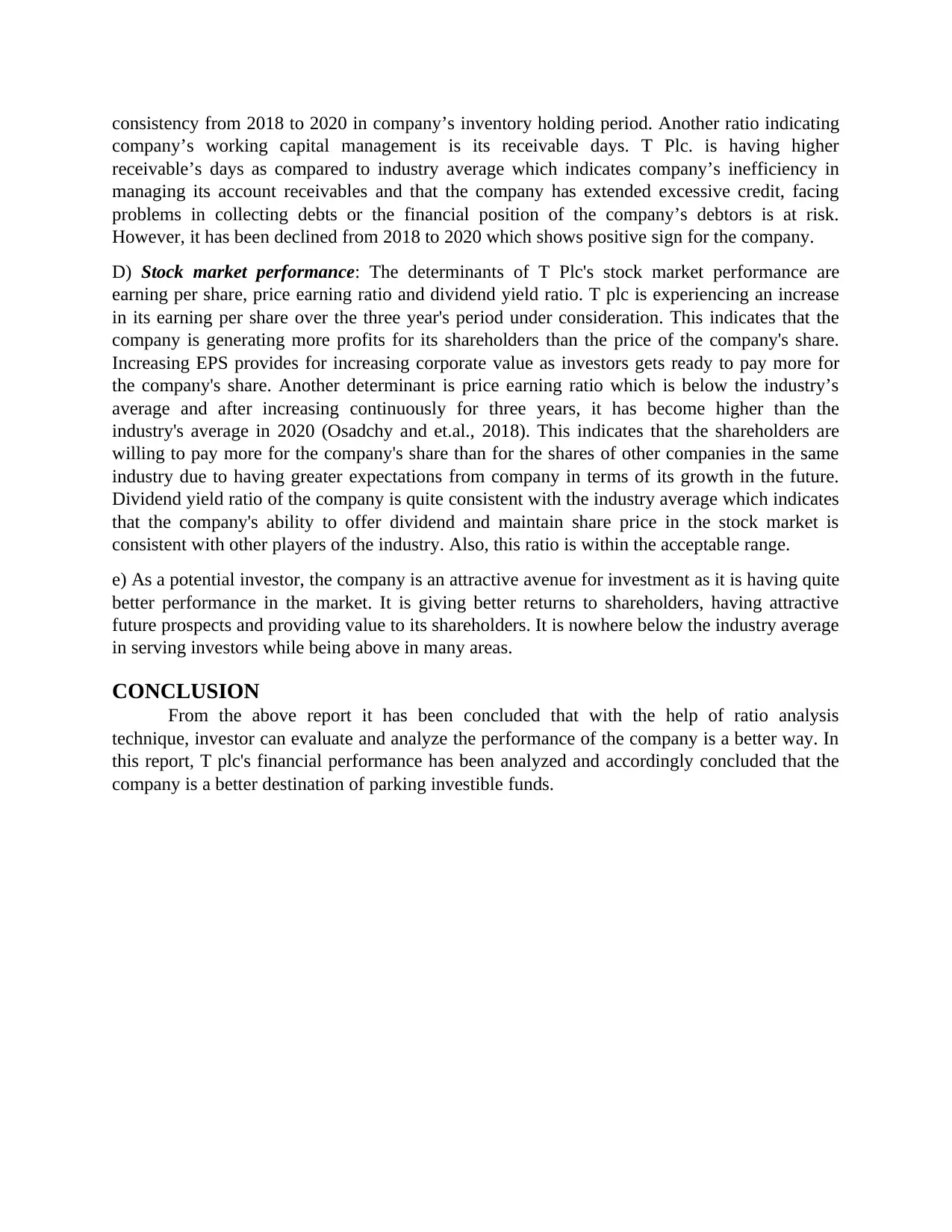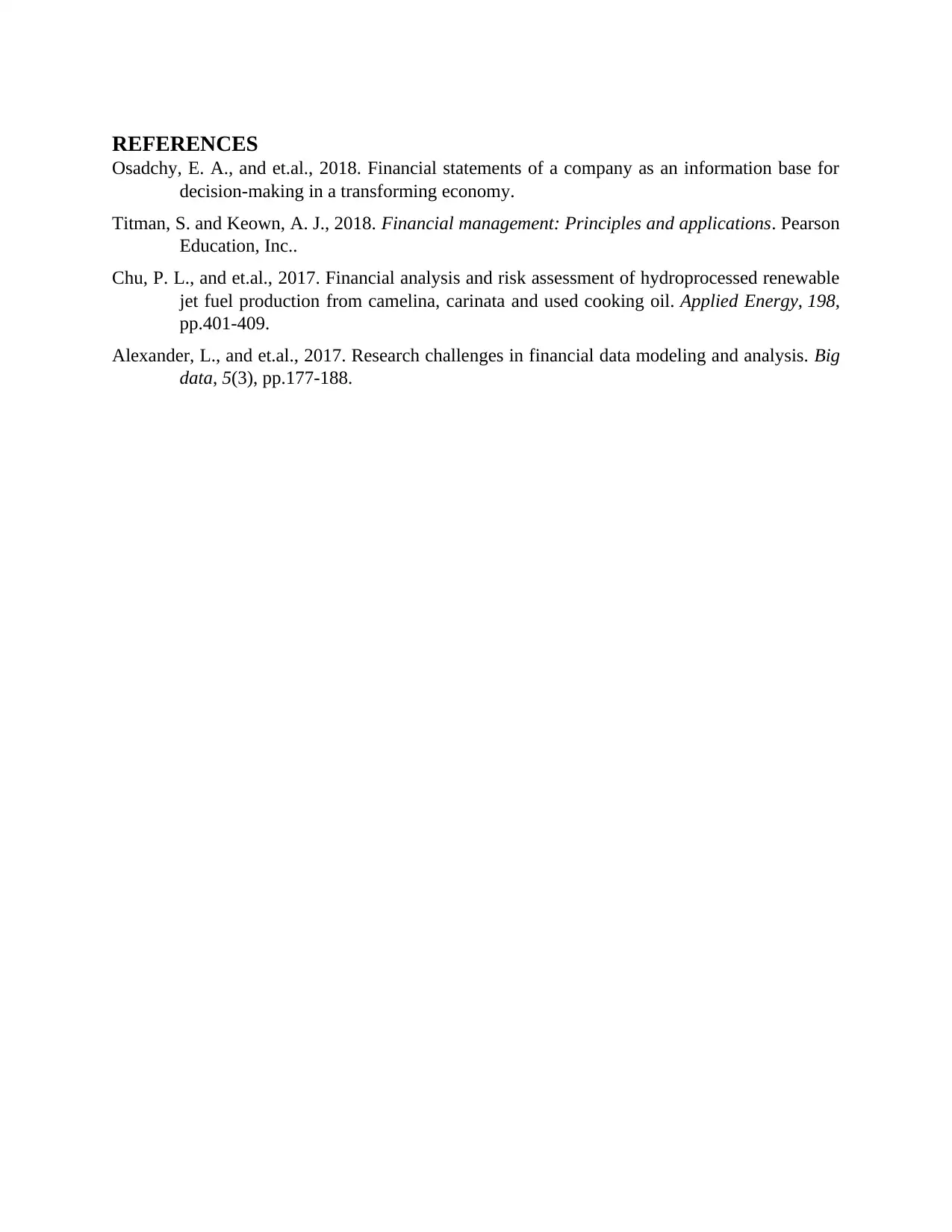T plc Financial Performance: Detailed Ratio Analysis Report
VerifiedAdded on 2023/06/18
|5
|1233
|154
Report
AI Summary
This report provides a financial performance analysis of T plc over three years, comparing it to industry averages using ratio analysis. It evaluates profitability through gross and net profit margins, liquidity using current and quick ratios, and working capital management via inventory holding and receivables days. Stock market performance is assessed with earnings per share, price-earnings ratio, and dividend yield ratio. The analysis reveals that T plc generally outperforms industry averages in profitability and stock market metrics but faces challenges in liquidity and receivables management. Overall, the report concludes that T plc presents an attractive investment opportunity due to its strong market performance and shareholder returns.

BUSINESS FINANCE
Paraphrase This Document
Need a fresh take? Get an instant paraphrase of this document with our AI Paraphraser

Table of Contents
INTRODUCTION...........................................................................................................................3
MAIN BODY...................................................................................................................................3
CONCLUSION................................................................................................................................4
REFERENCES................................................................................................................................5
INTRODUCTION...........................................................................................................................3
MAIN BODY...................................................................................................................................3
CONCLUSION................................................................................................................................4
REFERENCES................................................................................................................................5

INTRODUCTION
The present report is based on financial performance analysis of T plc. over the time
period of three years against the industry averages. The various aspects such as profitability,
liquidity, working capital management and stock market performance of the company will be
evaluated in this report through various financial tools such as ratio analysis tool.
MAIN BODY
a) Profitability: Gross profit margin is the excess of revenue over the cost of goods sold. It is
expressed in the form of a percentage of sales revenue. In other words, it is that portion of the
revenue that has been kept with the company as a gross profit. It indicates the relationship
between revenues and production costs. In the context of T plc. its gross profitability has been
higher than the industry average which indicates it is getting more in the form of gross profit
than other companies in the industry. Also, company’s gross profitability has been increased in
2019 by 1% and remains constant between 2019 and 2020. Higher gross profit margin indicates
that the company is able to earn reasonable amount of profit on its revenue from sales as long as
the company will kept its overhead costs under control (Alexander and et.al., 2017). In the same
way, the net profit margin of the company is consistently increasing in last three years and also
above the industry’s average. Increasing net profit margin indicates higher effectiveness of the
company in controlling its costs. Also, higher than industry average informs investors that the
company’s operations and management is better as compared with other players in the market.
The other ratio meant for investors is return on shareholder’s fund which is also continuously
increasing from 2018 to 2020 and also above the industry averages. It indicates how much return
does the investor will in return of their capital invested in the company. Higher ratio indicates
higher effectiveness of the company in utilizing the invested amount. Above industry average
also indicates that the company is successful in generating cash internally and accordingly, better
than other players in the industry.
b) Liquidity: Liquidity of the company can be determined through its current ratio and quick
ratio. Ideal current ratio is considered to be as 2:1 and ideal quick ratio is 1:1 or depends upon
the type and nature of industry. From the data given, it can be seen that the company’s current
ratio is higher at first place in 2018, after that it is continuously declining till 2020 and becoming
lower than the industry average (Chu and et.al., 2017). It shows that the company’s liquidity
position at risk where it may face difficulty in meeting its short term obligations as it is not able
to maintain enough liquidity as required by its industry. The same conditions can be seen through
quick ratio of the company which is also above in 2018 and after declining continuously
becomes lower than the industry average indicating company’s inability to quickly meet its short
term obligations.
c) Working capital management: Ability of the company to manage its working capital can be
determined through its inventory holding days and receivables days. The lower inventory
holding days indicates that the company is able to turn its inventory into sales of the company in
quick manner than the other players in the industry (Titman and Keown, 2018). As T Plc. is
having lower inventory holding days as compared to industry average, it indicates that the
company is able to quickly turn its inventory into sales for the company. Also, there seems
The present report is based on financial performance analysis of T plc. over the time
period of three years against the industry averages. The various aspects such as profitability,
liquidity, working capital management and stock market performance of the company will be
evaluated in this report through various financial tools such as ratio analysis tool.
MAIN BODY
a) Profitability: Gross profit margin is the excess of revenue over the cost of goods sold. It is
expressed in the form of a percentage of sales revenue. In other words, it is that portion of the
revenue that has been kept with the company as a gross profit. It indicates the relationship
between revenues and production costs. In the context of T plc. its gross profitability has been
higher than the industry average which indicates it is getting more in the form of gross profit
than other companies in the industry. Also, company’s gross profitability has been increased in
2019 by 1% and remains constant between 2019 and 2020. Higher gross profit margin indicates
that the company is able to earn reasonable amount of profit on its revenue from sales as long as
the company will kept its overhead costs under control (Alexander and et.al., 2017). In the same
way, the net profit margin of the company is consistently increasing in last three years and also
above the industry’s average. Increasing net profit margin indicates higher effectiveness of the
company in controlling its costs. Also, higher than industry average informs investors that the
company’s operations and management is better as compared with other players in the market.
The other ratio meant for investors is return on shareholder’s fund which is also continuously
increasing from 2018 to 2020 and also above the industry averages. It indicates how much return
does the investor will in return of their capital invested in the company. Higher ratio indicates
higher effectiveness of the company in utilizing the invested amount. Above industry average
also indicates that the company is successful in generating cash internally and accordingly, better
than other players in the industry.
b) Liquidity: Liquidity of the company can be determined through its current ratio and quick
ratio. Ideal current ratio is considered to be as 2:1 and ideal quick ratio is 1:1 or depends upon
the type and nature of industry. From the data given, it can be seen that the company’s current
ratio is higher at first place in 2018, after that it is continuously declining till 2020 and becoming
lower than the industry average (Chu and et.al., 2017). It shows that the company’s liquidity
position at risk where it may face difficulty in meeting its short term obligations as it is not able
to maintain enough liquidity as required by its industry. The same conditions can be seen through
quick ratio of the company which is also above in 2018 and after declining continuously
becomes lower than the industry average indicating company’s inability to quickly meet its short
term obligations.
c) Working capital management: Ability of the company to manage its working capital can be
determined through its inventory holding days and receivables days. The lower inventory
holding days indicates that the company is able to turn its inventory into sales of the company in
quick manner than the other players in the industry (Titman and Keown, 2018). As T Plc. is
having lower inventory holding days as compared to industry average, it indicates that the
company is able to quickly turn its inventory into sales for the company. Also, there seems
⊘ This is a preview!⊘
Do you want full access?
Subscribe today to unlock all pages.

Trusted by 1+ million students worldwide

consistency from 2018 to 2020 in company’s inventory holding period. Another ratio indicating
company’s working capital management is its receivable days. T Plc. is having higher
receivable’s days as compared to industry average which indicates company’s inefficiency in
managing its account receivables and that the company has extended excessive credit, facing
problems in collecting debts or the financial position of the company’s debtors is at risk.
However, it has been declined from 2018 to 2020 which shows positive sign for the company.
D) Stock market performance: The determinants of T Plc's stock market performance are
earning per share, price earning ratio and dividend yield ratio. T plc is experiencing an increase
in its earning per share over the three year's period under consideration. This indicates that the
company is generating more profits for its shareholders than the price of the company's share.
Increasing EPS provides for increasing corporate value as investors gets ready to pay more for
the company's share. Another determinant is price earning ratio which is below the industry’s
average and after increasing continuously for three years, it has become higher than the
industry's average in 2020 (Osadchy and et.al., 2018). This indicates that the shareholders are
willing to pay more for the company's share than for the shares of other companies in the same
industry due to having greater expectations from company in terms of its growth in the future.
Dividend yield ratio of the company is quite consistent with the industry average which indicates
that the company's ability to offer dividend and maintain share price in the stock market is
consistent with other players of the industry. Also, this ratio is within the acceptable range.
e) As a potential investor, the company is an attractive avenue for investment as it is having quite
better performance in the market. It is giving better returns to shareholders, having attractive
future prospects and providing value to its shareholders. It is nowhere below the industry average
in serving investors while being above in many areas.
CONCLUSION
From the above report it has been concluded that with the help of ratio analysis
technique, investor can evaluate and analyze the performance of the company is a better way. In
this report, T plc's financial performance has been analyzed and accordingly concluded that the
company is a better destination of parking investible funds.
company’s working capital management is its receivable days. T Plc. is having higher
receivable’s days as compared to industry average which indicates company’s inefficiency in
managing its account receivables and that the company has extended excessive credit, facing
problems in collecting debts or the financial position of the company’s debtors is at risk.
However, it has been declined from 2018 to 2020 which shows positive sign for the company.
D) Stock market performance: The determinants of T Plc's stock market performance are
earning per share, price earning ratio and dividend yield ratio. T plc is experiencing an increase
in its earning per share over the three year's period under consideration. This indicates that the
company is generating more profits for its shareholders than the price of the company's share.
Increasing EPS provides for increasing corporate value as investors gets ready to pay more for
the company's share. Another determinant is price earning ratio which is below the industry’s
average and after increasing continuously for three years, it has become higher than the
industry's average in 2020 (Osadchy and et.al., 2018). This indicates that the shareholders are
willing to pay more for the company's share than for the shares of other companies in the same
industry due to having greater expectations from company in terms of its growth in the future.
Dividend yield ratio of the company is quite consistent with the industry average which indicates
that the company's ability to offer dividend and maintain share price in the stock market is
consistent with other players of the industry. Also, this ratio is within the acceptable range.
e) As a potential investor, the company is an attractive avenue for investment as it is having quite
better performance in the market. It is giving better returns to shareholders, having attractive
future prospects and providing value to its shareholders. It is nowhere below the industry average
in serving investors while being above in many areas.
CONCLUSION
From the above report it has been concluded that with the help of ratio analysis
technique, investor can evaluate and analyze the performance of the company is a better way. In
this report, T plc's financial performance has been analyzed and accordingly concluded that the
company is a better destination of parking investible funds.
Paraphrase This Document
Need a fresh take? Get an instant paraphrase of this document with our AI Paraphraser

REFERENCES
Osadchy, E. A., and et.al., 2018. Financial statements of a company as an information base for
decision-making in a transforming economy.
Titman, S. and Keown, A. J., 2018. Financial management: Principles and applications. Pearson
Education, Inc..
Chu, P. L., and et.al., 2017. Financial analysis and risk assessment of hydroprocessed renewable
jet fuel production from camelina, carinata and used cooking oil. Applied Energy, 198,
pp.401-409.
Alexander, L., and et.al., 2017. Research challenges in financial data modeling and analysis. Big
data, 5(3), pp.177-188.
Osadchy, E. A., and et.al., 2018. Financial statements of a company as an information base for
decision-making in a transforming economy.
Titman, S. and Keown, A. J., 2018. Financial management: Principles and applications. Pearson
Education, Inc..
Chu, P. L., and et.al., 2017. Financial analysis and risk assessment of hydroprocessed renewable
jet fuel production from camelina, carinata and used cooking oil. Applied Energy, 198,
pp.401-409.
Alexander, L., and et.al., 2017. Research challenges in financial data modeling and analysis. Big
data, 5(3), pp.177-188.
1 out of 5
Related Documents
Your All-in-One AI-Powered Toolkit for Academic Success.
+13062052269
info@desklib.com
Available 24*7 on WhatsApp / Email
![[object Object]](/_next/static/media/star-bottom.7253800d.svg)
Unlock your academic potential
Copyright © 2020–2025 A2Z Services. All Rights Reserved. Developed and managed by ZUCOL.





